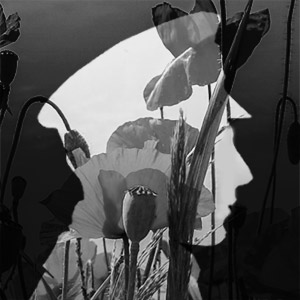
Joseph Broadhead was born in Ossett on the 1st June 1883, the sixth of seven children born to Ossett coal miner, Abraham Broadhead and his wife Eliza (nee Kilburn) who married at South Ossett Christ Church on the 21st August 1870. Joseph was baptised at the same Church on the 12th December 1885 and two of his brothers and one of his sisters were baptised on the same day.
In 1891, the family were living at Victoria Street, Ossett but left the town sometime after the birth of their seventh child in 1894. In 1901 the family were living in Gomersal where Joseph, now aged 18 years, was working as a piecer in a local woollen mill. At the time of Joseph’s death his parents were still living in Gomersal.
Joseph Broadhead, aged 21, married 24 year-old spinster, Helen Gledhill, at Gomersal Parish Church on the 2nd January 1904. By this time Joseph was working as a galvanizer. It is not certain that Joseph and Helen had children but sadly, Helen died in September 1909, aged 29, and was buried at St. Mary’s Church Gomersal on the 7th September 1909. Joseph’s whereabouts in 1911 are uncertain, but he may have boarding in Heckmondwike and working as a labourer.
The 10th (Service) Battalion, KOYLI was formed at Pontefract in September 1914 as part of K3 and came under command of 64th Brigade in 21st Division. The Battalion moved to Berkhamsted and then to Halton Park (Tring) in October 1914, going on to billets in Maidenhead in November. They returned to Halton Park in April 1915 and went on to Witley in August. In September 1915, they landed in France. On the 13th February 1918 the battalion was disbanded in France, with at least some of the men going to 20th Entrenching Battalion. Ernest Lythell died during the Battle of Loos, during which the 21st Division of the ‘New Army’, which included the 10th Battalion of KOYLI faced the Germans in battle for the first time.
Private Broadhead’s Army Service record has not survived but it is known that he enlisted in Dewsbury and joined the 10th Battalion of the King’s own Yorkshire Light Infantry. Private 17200, Joseph Broadhead embarked for France on the 11th September 1915 and, sixteen days later, on the 27th September 1915, he was killed in action. Joseph was posthumously awarded the 1914/15 Star and the British and Victory medals. He is not remembered on any Ossett Memorial or Roll of Honour probably because the family left Ossett in about 1894.1
Private Joseph Broadhead was killed during fighting at the Battle of Loos, which was part of a joint Allied offensive on the Western Front, and began on September 25, 1915. The battle engaged 54 French and 13 British divisions on a front of some 90 kilometers running from Loos in the north to Vimy Ridge in the south. The death toll at Loos was greater than in any previous battle of the war. The names of the British soldiers killed on the opening day of battle alone filled four columns in London’s Times newspaper the following morning. The British made five separate attempts to push past German positions at the Bois Hugo forest before calling off the attack on September 27th.

Above: The mining town of Loos (pronounced “Loss”), dominated then by the ironwork of a pit winding gear known to the British as “Tower Bridge”. Behind it, the heights of the long Loos Crassier (slag heap) and the railway running up to the pit head. Loos today bears scant resemblance to this.3
Private Joseph Broadhead died aged 32 years on the 27th September 1915, the son of Abraham and Eliza Broadhead, of Castle Hill, Gomersal, Leeds. He is remembered on Panels 97 and 98 of the Loos Memorial,3 Pas de Calais, France. The Loos Memorial forms the sides and back of Dud Corner Cemetery. Loos-en-Gohelle is a village 5 kilometres north-west of Lens, and Dud Corner Cemetery is located about 1 kilometre west of the village, to the north-east of the D943, the main Lens to Bethune road.
Dud Corner Cemetery stands almost on the site of a German strong point, the Lens Road Redoubt, captured by the 15th (Scottish) Division on the first day of the battle. The name “Dud Corner” is believed to be due to the large number of unexploded enemy shells found in the neighbourhood after the Armistice.
The Loos Memorial commemorates over 20,000 officers and men who have no known grave, who fell in the area from the River Lys to the old southern boundary of the First Army, east and west of Grenay. On either side of the cemetery is a wall 15 feet high, to which are fixed tablets on which are carved the names of those commemorated. At the back are four small circular courts, open to the sky, in which the lines of tablets are continued, and between these courts are three semicircular walls or apses, two of which carry tablets, while on the centre apse is erected the Cross of Sacrifice.
References:
1. 2014 biography and Roll of Honour because the Commonwealth War Graves Commission and/or the U.K. Soldiers who Died in the Great War 1914-1918 listing records him as born or residing in Ossett.